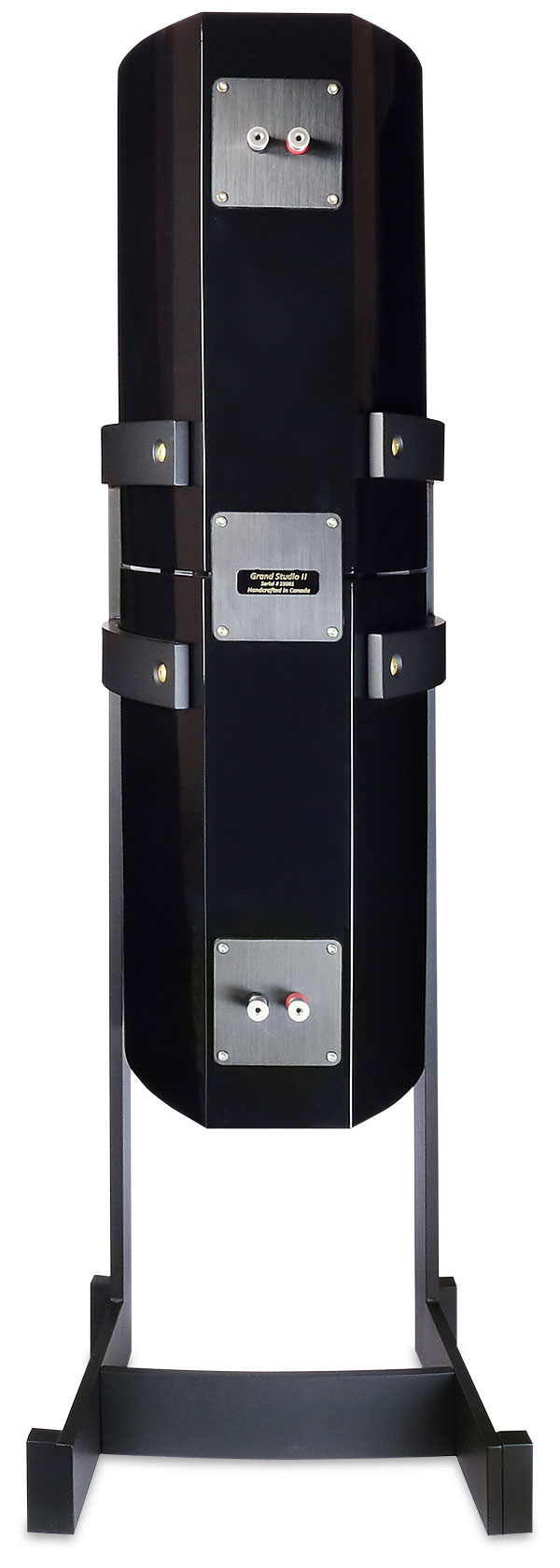Gershman Acoustics Grand Studio II Loudspeaker Page 2
![]() Concert Clarity
Concert Clarity
Our enduring impression of this speaker's sound, even after much fettling of position, was of a restrained treble and a slightly defocused stereo image. Anna Fedorova's recording of Rachmaninov's third piano concerto [Channel Classics CC45023] certainly possessed suitable weight and sonority when required, just as the accompanying orchestra sounded warm and rich, with decent detail. However, there were times when the principal instrument tended to occupy the entire soundstage, its position never entirely consistent.
Similarly, Mick Jagger's vocal on 'Angry', opening The Rolling Stones' Hackney Diamonds [Rolling Stones Records 581 225-5], would fill the space between the speakers, but while the track was certainly punchy, it was also a little light in the deep bass. The drums had good slam, but even allowing for the underlying sound quality of the album, which is more rough and ready than sophisticated, it still sounded slightly untidy. Nevertheless, the stripped-back take on Muddy Waters' 'Rolling Stone Blues', closing the album, boasted reasonable definition, albeit again with that 'big mouth Mick' effect.
Switching to the Dunedin Consort recording of Bach orchestral suites [Linn Records CKD 666], the Grand Studio IIs offered a good spread of sound but, again, not the sharpest of focus. Instruments were clearly resolved but not precisely placed, while everything seemed to happen between and behind the plane of the speakers. For all that – and that oddly restrained treble – there were good instrumental timbres, even if the harpsichord continuo was somewhat lost.

Walk On The West Side
The speakers were much more at home with André Previn and His Pals on their improvisations on West Side Story [Contemporary Records S-7572]. Admittedly there's not much to go wrong, with Previn's piano and Red Mitchell's bass on the left channel, and the drums of Shelly Mann on the right. Similarly, the very different Art Of Noise live recording of 'Moments In Love', from the Noise In The City set [Music On CD MOCCD14069], at last delivered a central soundstage image from the simple mix. But, again, the oh-so-polite Tokyo audience seemed rather more reticent than usual as there was not much live ambience.
This same tendency to dryness also affected Anna Lapwood's arrangement of the Britten 'Sea Interludes', played on the organ of Ely Cathedral on her debut solo album, Images [Signum Classics SIGCD688]. There was good tonality to the instrument, and plenty of power for the room-shaking 'Storm' interlude, but the space of the cathedral was a tad diminished and there was less ambience than this music usually delivers.
That last interlude gets very busy, as does Stewart Copeland's reworking of his old band's 'Every Little Thing She Does Is Magic' on his Police Deranged For Orchestra album [Kinetic Kollections Overseas download]. The restrained opening was handled well, but when the vocals kicked in it all got a bit more confused, though Copeland's kit, mixed hot, shone through.
Delicious Harmonies
However, these speakers worked well with the Emily Barker/Amber Rubarth/Amy Speace collaboration Applewood Road [Linn AKD 579], with the three singers grouped around a single mic. The sound was intimate, with fine timbres to the voices and the delicious harmonies intact. But with another of my 'torture tracks', the Michael Stern/Kansas City Orchestra recording of 'Young Person's Guide To The Orchestra', on Britten's Orchestra [Reference Recordings RR-120SACD], while there were yet again fine instrumental timbres, the orchestra in the final fugue sounded more 'of a piece' than having the 'point at an instrument' clarity evident when heard via some other speaker designs.
Hi-Fi News Verdict
The Grand Studio IIs do have an appeal, though this is mainly with simpler recordings, where they can demonstrate their extended bass and sweet midband and treble, but soundstaging isn't a strength here. It's a little disappointing this novel 'stacked' approach doesn't offer a clear or consistent advantage over more conventional speaker designs – but then if it did, presumably everyone would be doing it!

















































